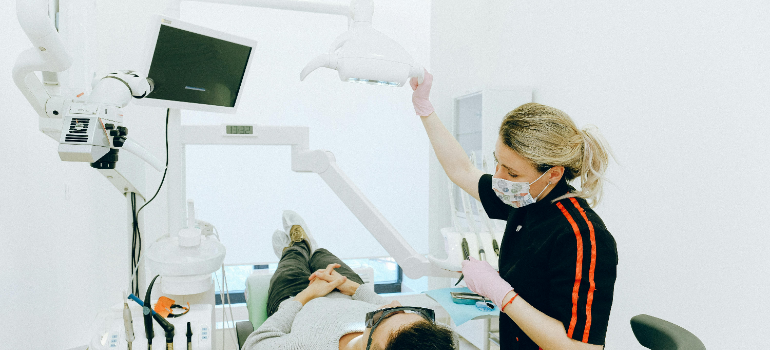Medical practices often move scanners, lab analyzers, and surgical tools across Silicon Valley. Northern California movers handle these shipments, yet managers must still learn the rules. Regulators inspect every detail and issue steep fines for errors. Moreover, a single bump can ruin a delicate magnet or endanger patient data. Therefore, study each agency’s demands before scheduling trucks. Federal, state, and county officers share oversight and expect full compliance. Careful planning keeps timetables intact, protects budgets, and shields reputations. In short, anyone relocating medical equipment in Bay Area must treat regulations as a vital project step.
Federal Regulations You Need to Know
The Food and Drug Administration classifies every device and sets transport guidelines that maintain sterility, calibration, and labeling. The agency also warns carriers to document temperature and vibration controls. Next, the Department of Transportation governs hazardous components, such as compressed gas or radioactive tracers, and demands special placards on trailers. Additionally, HIPAA rules protect any stored patient data during transit, so movers must lock servers and shred loose charts. Finally, OSHA enforces safe lifting practices to prevent staff injuries. Together, these federal bodies create a strict baseline for every shipment leaving or entering California. Ignoring any section risks legal action and delivery delays.

California‑Specific Rules for Medical Equipment Relocation
California adds extra layers of oversight. The Department of Public Health registers medical‑waste transporters and inspects trucks for spill‑proof containers. Moreover, the Food and Drug Branch monitors device safety and can quarantine loads that lack paperwork. Next, Caltrans issues oversize or overweight permits for MRI magnets and linear accelerators that exceed axle limits. Drivers must follow approved routes and travel during off‑peak hours. Further, Cal/OSHA mandates detailed lift plans when cranes enter hospital grounds. Clinics that ignore these directives may face shutdown orders from state inspectors. Consequently, everyone relocating medical equipment in Bay Area should confirm each license number and permit date before wheels roll.
Local Bay Area Regulations Impacting Medical Equipment Moves
Counties and cities enforce their own codes. Alameda requires oversized‑load forms under Municipal Code 12.08 and limits moves to specific corridors. San Francisco issues street‑use permits when crews block bike lanes or sidewalks near clinics. Meanwhile, Palo Alto demands noise‑control plans for early‑morning rigging. Parking officers may ticket unattended trailers, so dispatchers often arrange police escorts. Consequently, planners should speak with each public‑works office at least one week ahead. Experienced medical equipment moving companies track these rules and schedule escorts, signage, and lane closures. Their knowledge prevents costly rescheduling and keeps sensitive devices on schedule for installation and calibration.
acpwa.org
Proper Licensing for Medical Equipment Movers
Only certified specialists should handle CT gantries or centrifuges. Reputable carriers maintain ISO 13485 quality systems that document every handling step. Additionally, the California Public Utilities Commission requires a household‑goods permit for any intrastate move, even within one county. Firms also carry CDPH transporter registrations when they haul regulated waste or biohazard accessories. Further, technicians often hold manufacturer training cards that validate their ability to power down and reassemble complex units. Always request these credentials before signing contracts. Thorough vetting ensures chain‑of‑custody integrity, accurate re‑installation, and legal compliance for anyone relocating medical equipment in Bay Area.

Insurance Requirements: Protecting Your Equipment During the Move
Medical devices can cost millions, so robust coverage matters. Standard cargo insurance rarely matches the replacement value of proton therapy modules or da Vinci robots. Therefore, demand specialized transit policies with declared values and broad peril lists. Additionally, ensure general liability covers hospital hallways and loading docks. Movers should provide certificates showing at least $5 million in aggregate coverage when elevators and cranes enter patient areas. Moreover, ask underwriters to endorse calibration or contamination clauses. Experienced office movers in San Francisco already hold these policies and can add your facility as an additional insured within hours. Proper documents turn unforeseen mishaps into reimbursable claims instead of capital losses.
How to Prepare Your Equipment for Safe Transport
Successful moves start with solid preparation. First, technicians perform full shut‑down procedures and drain fluids from sterilizers or chillers. Next, they lock gantry arms and secure loose components with manufacturer‑approved brackets. Then, foam‑lined crates or shock‑absorbing pallets protect sensitive optics and boards. Moreover, calibrated shock and tilt indicators track handling events during transit. Climate‑controlled trailers keep temperatures within tolerance. Finally, confirm route clearances for bridges and tunnels before departure. Experienced local moving companies Bay Area supply specialized dollies, air‑ride trucks, and climate records that prove compliance to state inspectors. Detailed preparation preserves warranties and allows immediate commissioning at the new site.

Common Mistakes to Avoid During a Medical Equipment Relocation
Avoid these errors to save money, time, and patient trust:
- Forgetting to verify every permit and license.
- Choosing general movers without medical training.
- Skipping manufacturer shut‑down protocols.
- Using crates that lack shock monitors.
- Overlooking HIPAA safeguards on data drives.
- Ignoring bridge height limits on Bay Area routes.
- Failing to purchase adequate transit insurance.
Navigating Medical Equipment Relocation with Confidence
Detailed planning, certified partners, and strict paperwork keep every shipment safe and legal. Follow federal, state, and local rules, and verify insurance before trucks depart. With these steps, teams relocating medical equipment in Bay Area safeguard budgets, schedules, and, most importantly, patient care standards. Have no worry when your equipment is in the right hands.


